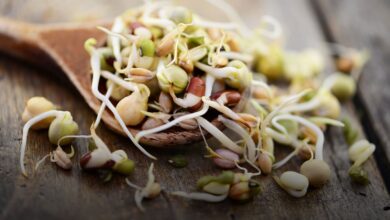Health and Beauty
How and why to do Mayurasana (Peacock Pose)?

Peacock pose is an advanced yoga pose that involves balancing on your hands. It is closely associated with Hatha yoga, although it is also practiced in other types of yoga.
Practicing Mayurasana is beneficial for the abdominal muscles, shoulders and back muscles. It also acts as a detoxifier and energy booster in the body. On a mental level, Mayurasana mobilizes attention and willpower when held for a long period of time. This pose is also a great way to release tension in the body, stretch your limbs, and challenge your balance skills.
Illustrative credit © Aliaksandr Makatserchyk
- Start by getting into Vajrasana (Diamond Pose), then straighten your knees to create space between them.
- Then tilt your shoulder forward to place your palms on the floor, directly in front of you, a good distance apart. Your fingers point toward your knees.
- Then press your palms into the floor and bend your elbows to rest your torso on the back of your arms. Also keep your elbows near the navel area.
- When you place your torso on your upper arms, extend your legs back and balance your body on your palms and toes, here.
- From here, turn your torso to press your elbows into it, then lean forward slightly to lift your legs. Bend your neck and look straight ahead.
- This is the final position of Mayurasana. Maintain your balance for as long as you want and try to lift your legs while engaging your abdominal muscles.
- Then release the pose by lowering your legs and then your knees toward the floor. Then return to Vajrasana, straightening your torso.
Training tips
- Avoid raising your legs up when you reach the final pose of Mayurasana. This may cause your head to fall to the ground. Therefore, you must go slowly and steadily by leaning into the final position.
- Holding your body in Mayurasana engages your triceps muscles in an eccentric contraction. This requires great strength in the forearms and shoulders. Therefore, beginners who have not practiced this asana before should start by strengthening the triceps before launching into the peacock pose.
- A practitioner with excess belly fat and weak abdominal muscles may have difficulty engaging the core muscles in Mayurasana. Therefore, it is recommended to reduce belly fat or strengthen the abdominal muscles before starting to practice Mayurasana.
- If there is difficulty keeping the legs up during the final pose, practitioners can use chair support under their feet. They can also get help from another person to balance their posture.
- Avoid practicing Mayurasana if you suffer from wrist, elbow, or shoulder injuries.
How and why to do Mayurasana (Peacock Pose)?


